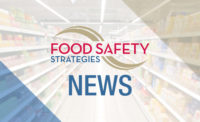“An inspectors job is to ensure compliance with the rules, which in turn should result in safe food being served. They are government agents possessing enforcement authority to ensure safe food. That doesn’t mean that inspectors have to have a cop attitude. In fact, my experience is that inspectors who have the best interpersonal skills are by far the most effective in gaining compliance. There are lots of opportunities to teach food safety principles and work cooperatively with the industry. But inspectors are not just facilitators.”
–Jim Austin, R.S., restaurant inspector
What Are the Challenges to the Food Industry in Food Safety Compliance?
There is a national standard for food safety preparation and inspection, the FDA Food Code. The code is revised every 4 years. Unfortunately, it is a set of guidelines left to the states to embrace. Compliance is voluntary. Many states and or municipalities choose not to follow these scientifically based rules developed by over 600 food safety experts. As a result, national chains need to follow guidelines that vary state-by-state and municipality-by-municipality. Food workers relocating from one state or municipality to another often find themselves exposed to varied standards. That variability creates the first challenge.
The second challenge is the mistaken mentality of food industry management or ownership that it is the job of the health inspector is to give a “stamp of approval” on their restaurant. Even health departments don’t pretend to be the end all in food safety. The language from a typical health department web site makes it clear that the real responsibility for food safety lies with the food establishment:
“One inspection may not be representative of the overall, long-term sanitation of an establishment. On any given day, a restaurant may have greater or fewer violations than observed during an inspection. In addition, some violations noted on an inspection report may have been corrected at the time of the inspection, which are indicated on the report. Follow-up inspections may be conducted for specific critical violations that cannot be corrected at the time of the inspection. Additionally, follow-up inspections may be conducted for any other violation at the discretion of the inspector. Although Retail Food Establishments are inspected by the health department, it is the establishment’s responsibility to ensure that food safety procedures are followed.”
–Colorado
Yet a third challenge is the shrinking dollars for health inspections, especially foreign foods and some municipalities. That shrinking dollar creates a need to do more with less. Some restaurants are inspected only annually. Even the busiest may be inspected only quarterly. Often the inspections are prearranged. This all underscores the important void that the public can fill in ensuring a higher level of excellence in food safety. A motivated consumer can watch for standard violations. DiningGrades.com, which was founded on this principle, has a rating system that provides objective feedback to restaurant management can be a continual voice demanding excellence in food safety.
What Are Common Restaurant Food Safety Violations?
Despite the variability in inspection standards and inspection limitations, there are common themes found in food safety violations. According to the U.S. Centers for Disease Control and Prevention, the top five violations are: improper holding or cooling temperatures, inadequate hand washing, improper cooking, contaminated food contact surfaces and food from unsafe sources. The Center for Science in the Public Interest in its “Dirty Dining Report,” has added an additional top five concerns based upon consumer input: employee cleanliness, rodents/insects, improper use of wiping cloths, ill restaurant workers and bare hand contact.
According to Bruce Kress R.S., a seasoned health inspector with over 30 years of experience, the most common violations he encounters are:cook staff not knowing the correct temperature to cook meats, failure to use personal protective gear: gloves or hair restraints, cross contamination of foods in preparation and presence of pests, such as flies or other rodents in the kitchen. Mr. Kress shares his comments in a radio interview.
The government health inspector shoulders considerable but not exclusive responsibility for ensuring food safety. With variability in food safety standards, infrequency of inspections and limited governmental funding, the public can assume an increasing role as the eyes and offer a voice in demanding food safety excellence.
Harlan Stueven, M.D., is an emergency physician, poisoning specialist and founder of DiningGrades.com.




